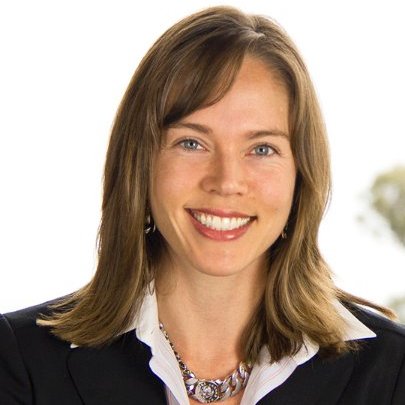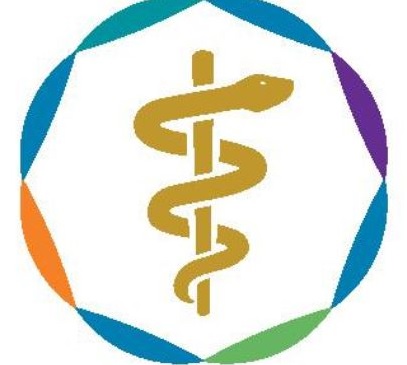Two hundred thousand people die every year because of a failure to communicate.
A trillion dollars is wasted every year.
That’s how health care experts set the stage when they talk about one of the biggest concerns facing the industry today: a lack of interoperability.
Yes, it’s a big word. And it’s one that means something different to nearly everyone you ask. But interoperability — the ability for medical records and technologies to seamlessly share data in a way that improves patient care — is a problem Nashville’s health care leaders must get serious about solving.
So the most powerful names in Nashville health care are joining forces to do just that. A nonprofit center ramping up in Nashville has brought together a group of competitors — including Middle Tennessee giants HCA Holdings Inc., Community Health Systems Inc. and LifePoint Health — in an effort to set standards for health care technology.
With the help of government dollars and innovative enthusiasm, entrepreneurs and established companies have spent the past decade developing countless technologies meant to improve care. But without the buy-in of hospital companies, the industry’s been left with hundreds of innovators casting about in the dark, each cultivating their own proprietary corner of the market.
That’s where the Center for Medical Interoperability steps in. Launched with $10 million from two philanthropists in San Diego, the group has front-loaded its board of directors with a slate of names that have the power to bring significant change to health care — and keep Middle Tennessee’s leading industry in the driver’s seat.
Building a powerhouse
Launched by the foundation for Gary and Mary West, two successful technology entrepreneurs, the Center for Medical Interoperability is aimed at creating a centralized lab where the health care industry can solve problems.
The center announced its board members last year. Among them: HCA’s Milton Johnson, CHS’ Wayne Smith and LifePoint’s Bill Carpenter, the CEOs of three of the nation’s five largest publicly traded hospital companies. They sit alongside other national figures (including the heads of Johns Hopkins Medicine and the Robert Wood Johnson Health System)and well-known Nashville leaders like Vanderbilt University Medical Center CEO Dr. Jeff Balser and Dr. Mike Schatzlein, market leader of Indiana and Tennessee ministries for the nation’s largest Catholic hospital system, Ascension, represented locally by Saint Thomas Health.
That who’s who of health care is key to making technology communicate better, said Ed Cantwell, the center’s executive director.
“The reason I came to Nashville is we wanted the largest for-profit and the largest nonprofit to be the anchor,” said Cantwell, who moved the center here from San Diego. “I came here to recruit Ascension and HCA. Little did I know that I would get CHS and LifePoint … and Vanderbilt. So right now those five are really a phenomenal force because they not only represent the diversity of health care, between the five there [is more than] $100 billion a year in revenue.”
That translates to purchasing power that can force vendors to meet standards set by the center’s board, Cantwell argues. The makers of health care technology products could have incentive to prevent their tools from playing well with others, as it might force a customer who’s on their system to buy only their products. But if the nation’s largest hospital companies won’t buy products or systems that don’t work with a broad array of other tools, that incentive goes away.
At a recent Nashville Health Care Council event, Schatzlein said this shift “needs to be driven by the providers.”
If the industry can “come together and certify against standards,” he continued, “we are in a position to implement … and enforce [those standards].”
The center is set to open its new Nashville facility and lab in the OneCity development by the end of this year. Along with the center’s board members, any type of health care business can join the center, which is supported by member dues. The center will not only work to set standards that health-tech products must meet, but it also will house a testing laboratory — designed to employ up to 120 engineers — where those products can be tested and certified for how well they meet the criteria.
“I don’t think anybody that was developing an [electronic medical record] decided to not make their system interoperable. That’s typically not how engineers think,” said Jeff Cunningham, chief technology officer for Nashville-based health tech firm Informatics Corporation of America. “But they were designed for a specific purpose.”
Why the tech doesn’t talk
There are reasons these technologies don’t work together now. First, it’s hard to do.
In the documentary “No Matter Where” — directed by Kevin Johnson, chairman of biomedical informatics at Vanderbilt University Medical Center — a West Tennessee doctor who’d seen care transformed by the effective exchange of information gave up a few years later because the hospital switched software vendors to one he didn’t like.
“I’ve tried to use it, my colleagues have tried to use it, and it’s just not user-friendly,” David Wilcox, a doctor with Memphis’ St. Francis Hospital featured in the film, said of the hospital’s software for sharing information.
But the issues aren’t just about user-friendliness and design. The business incentives also aren’t always there.
For tech vendors and health care providers, there are advantages to keeping your customer — be it the hospital or a patient — tied to your system. Just as a vendor may want to keep a hospital tied to its products, a hospital system may want to keep patients attached to its internal systems so they don’t jump to another provider.
“True interoperability is not good for providers,” Zane Burke, president of health IT giant (and dominant electronic medical record provider) Cerner, said at the recent health care council panel on the issue. “There’s business model challenges in there.”
But, proponents argue, there also are advantages to data sharing, which extend beyond the patient safety rationale so often cited. Dr. Lynn Simon, chief medical officer at Community Health Systems, said increasing interoperability would save CHS money and increase its efficiency in rolling out new technologies.
“Certainly with a lot of time and effort and resources and dollars, anything can be connected together,” Simon said.
But making those systems work together without spending all those resources and dollars would be better for both hospitals and the vendors trying to sell to them, Simon argued.
“If we can’t easily integrate them into our environment, it limits their ability to sell their product, to test their product, to expand their product,” she said.
Without effective communication, providers are “in a bit of stalemate,” said Dr. Jonathan Perlin, chief medical officer and president of clinical services at HCA, because they don’t want to “bet on the wrong horse” and pick a technology that won’t work with their other products or in the industry’s future.
“It’s fundamentally a missed business opportunity,” Perlin continued, comparing the lack of tech communication in health care to the ease of it in other industries — such as the fact that your Sprint cell phone can call your friend’s phone, even if they have AT&T.
“Fundamentally this is a care-quality [and] a safety issue,” Perlin said. “It’s also got the business case on its side, as it’s a financial opportunity for providers, payers, patients and technology vendors in terms of a more efficient health care ecosystem and certainly one that’s far more informed.”
Government’s role: Health care’s efforts still need power of government behind new tech rules
All sorts of other industries come up when health care leaders talk about technologies working effectively together. You can take money out of any bank’s ATM, regardless of where you bank. Your iPhone can send a text message to my Android. Trains from any company can roll down the same tracks.
Those precedents have some in the health care industry convinced that when it comes to making health care technology work together, standards must be set — and enforced — by the government.
“It’s pretty clear that private industry has limited incentives to do the kind of work that gets a national standard up and running quickly,” said Kevin Johnson, chairman of biomedical informatics at Vanderbilt University Medical Center. “That being said,” Johnson continued, Nashville’s new “Center for Medical Interoperability contains the right people … and they’re in the right city at the right time.”
Dr. Jonathan Perlin, chief medical officer at HCA Holdings Inc., has been involved in public-sector efforts to effectively share information and data, serving on the U.S. Department of Health and Human Services Health IT Standards Committee, among similar efforts. He contends solutions will be required from both government and industry leaders.
“We’ve not gotten there entirely by private-sector [efforts], despite shared interest,” Perlin said. But with “increasing frustration and recognition of opportunity,” private-sector operations like the Nashville interoperability center may find success, he continued. “It’s quite an amazing group.”
What’s interoperability? That’s a big word. Here’s what it means to Nashville group
Ed Cantwell’s background isn’t in health care. But the mechancial engineer’s resume — which includes flying jets in the Air Force, working for Texas Instruments and running a wireless company that served health care companies — was enough to lead him to the director’s seat of the Center for Medical Interoperability, a group aiming to make health care technology communicate better.
Cantwell has five criteria he uses to define true interoperability:
1. Plug-and-play (no cost to switching platforms)
2. Two-way (able to both send and receive)
3. One-to-many (the addition of a new device doesn’t throw off what’s already hooked up)
4. Standard space (not proprietary)
5. Truly trusted (guaranteeing safety, privacy and security)
“What happens between [electronic medical record vendors] is data-sharing. … It’s as if I allowed my GPS location of my Ford to go into a database to be accessible to others,” Cantwell said. “True interoperability is the 13 censors in my truck connected to the brakes, connected to a computer, that senses a collision and applies the brakes, even though I might miss it.”












